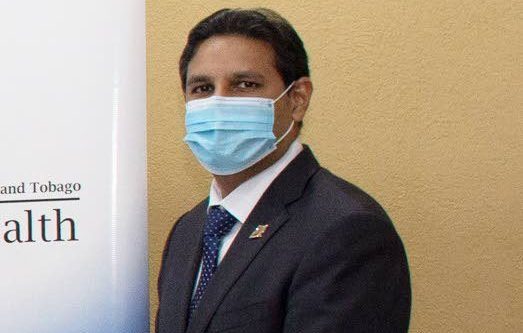High alert for yellow fever

CMO Dr Roshan Parasram said Trinidad and Tobago is currently at 89.2 per cent coverage for yellow fever, which is below the 95 per cent required by the World Health Organization to protect the population. He urged people to make sure they and their children are vaccinated.
Speaking at the Health Ministry’s media conference on Wednesday, he said while there were no human cases in the country, the virus, which is transmitted via infected Aedes aegypti mosquitoes, had been detected in red howler monkey carcasses in Biche and Plum Mitan.
“What it means for us to find a positive animal with yellow fever in the country is we need to be on heightened alert, and what we have to do as a population is ensure we have our vaccination for yellow fever.
"Generally speaking, yellow fever is a disease covered in our childhood immunisation schedule and therefore at one year you would have gotten your vaccine for yellow fever. Once you got your one dose you would have been protected for life.”
He said last year the ministry noted that people attending face-to-face classes had not had their vaccination cards scrutinised.
“We have noted that our coverage rate for yellow fever has now gone down over the 2020 period. So in 2019 our coverage would have been 98 per cent at a national level, and WHO requires 95 per cent at a national level for us to protect our population sufficiently. We have gone down to 89.2 per cent with regard to yellow fever and we are calling on parents in particular to take your children in to the health centres to be vaccinated to ensure that our coverage gets back up to that 95 per cent.”
He reiterated that there are no human cases of yellow fever in TT, and there have been none since 1979.
“We have no epidemic of yellow fever. But we have noticed epizoonotic cases which is an increase in the disease in the animal population, occurring in two sites. We have enough vaccines: we have 105,400 vaccines available for the population to be vaccinated.”
Parasram said TT is considered endemic for sylvatic or jungle yellow fever, “Meaning that the cycle is possibly occurring and continuing in the primate population in the forested areas. So there remains a risk and there has been a risk for many years.
"This is the first positive from an animal sample in decades. We really have to keep a close eye on it, as we have changing population dynamics, we have changing coverages in terms of our yellow fever coverage, as I noted that 89.2 per cent is not where we ought to be and we need to get that up.”
He said in the past couple of months, the Health Ministry had noticed an increase in the number of deaths of red howler monkeys in certain districts in the southern region.
“In particular Biche/Plum Mitan and adjacent areas, there’s a contiguous forested area going all the way to Rio Claro, in which we have sighted animals coming out of the forest, usually a sign of illness, and having some deceased animals. We are calling upon people at risk of going into the forest, including veterinary personnel, laboratory workers who routinely handle wild-type yellow-fever virus, agricultural personnel who frequent forested areas, hunters, forest workers, adventure seekers (eg hikers and campers), Defence Force personnel, people living in or near forested areas, health workers and other people who frequent forested areas, to make sure they are vaccinated and take personal protective measures.”
“Going from a jungle/sylvatic cycle to an urban transmission cycle requires movement from that jungle locality into the urban setting as wells as it requires there is an immune- naïve population. Having the coverages down means there’s some immune naivety in terms of immunity and we need to get that up quickly to protect us from any epidemic that might be forthcoming.
"We have to look at special populations as well, people who move across different parts of the world coming from jurisdictions across Trinidad. We have noted that yellow fever is present in our neighbouring countries of the Americas, so there is presence in the region.”

Comments
"High alert for yellow fever"